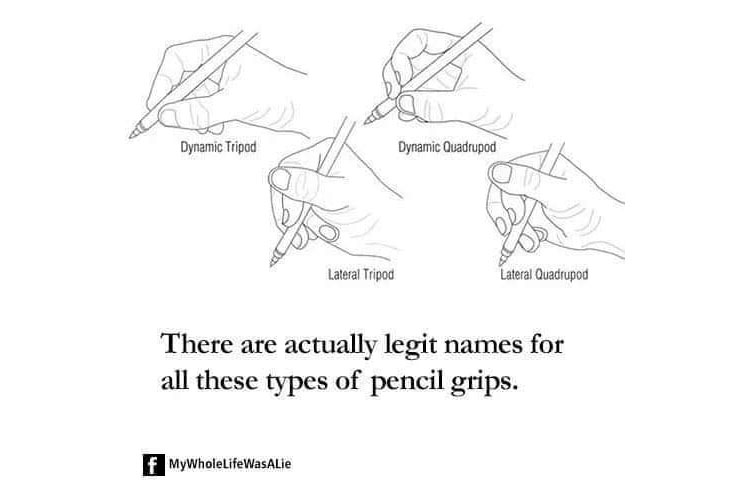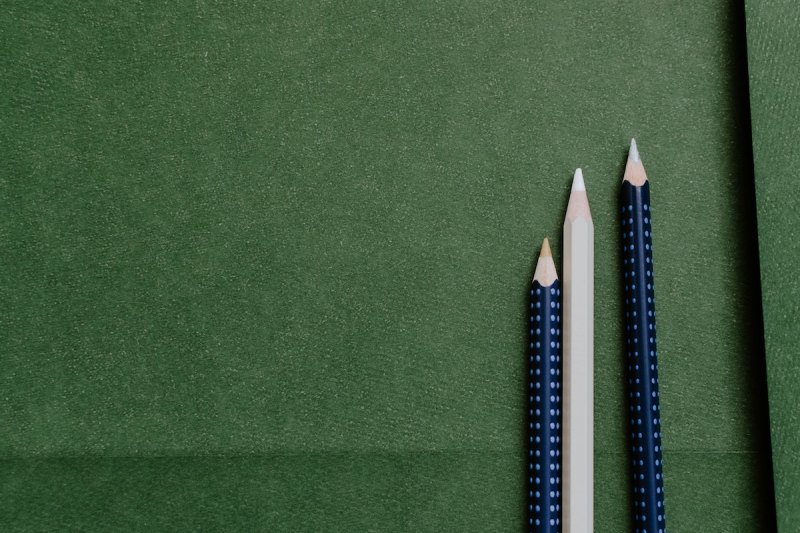
Contrary to what your teachers may have told you, there’s more than one right way how to hold a pencil. As we recently learned from this viral Reddit post, there are four main pencil grips. None of the grips are incorrect, but each one can impact your handwriting, writing speed, and how long you can write without getting tired. Keep reading to learn more about these unique grips and learn which category you fit into.

The four mature pencil grips
The four “mature” pencil grips are dynamic tripod, dynamic quadrupod, lateral tripod, and lateral quadrupod. The lateral or dynamic descriptor refers to the thumb placement, and the tripod or quadrupod signifies whether the pen rests on the middle or ring finger. Let’s take a closer look at each of these grips.
Dynamic tripod
With the dynamic tripod grip, the writing utensil rests between the thumb and forefinger. The middle finger remains behind the base of the pen. This type of grip makes it comfortable to write for longer periods of time.
Dynamic quadrupod
The dynamic quadruped grip uses four fingers to hold a pencil. With this grip, the pen sits in the middle of your fingers, with the thumb on the bottom, the index and middle fingers on top, and the ring finger behind. This method of how to hold a pen can put unnecessary pressure on your hand, potentially causing discomfort and pain when used for extended periods.
Lateral tripod
To use the lateral tripod grip, the pencil rests on the middle finger with the index finger on top of the pencil. The thumb then goes across the index finger. While this grip may provide a bit more stability, it can also wear out your hand faster than some of the other pencil grips.
Lateral quadrupod
The lateral quadruped grip relies on four fingers to balance the writing tool. The index and middle fingers rest atop the pencil, the thumb crosses over the index finger, and the ring finger rests behind the pencil. When used for long periods, this grip can also leave your hands feeling fatigued.

Which pencil grip is best?
When comparing the four pencil grips above, the differences may seem minuscule. But in looking at the images, you’ll instantly know which type looks the most natural — and which you probably got reprimanded for using in school. This seems to be a very common experience. Hundreds of Reddit users flocked to the comments of the viral post to share their natural grip style and how they were scolded for it.
Many were taught that the dynamic tripod grip was the correct one, but were their teachers correct? In short, no. Nowadays, it’s widely acknowledged that, when it comes to holding a pencil, it’s better to do whatever works best for you. It’s also important to note that these four types aren’t the only ways to hold a pencil. There are many other methods that may work better for you.

Do pencil grips help handwriting?
“Pencil grips” don’t simply refer to how you hold your pencil. Different brands, like BIC, offer pencil grips. These grips are cushioned items that attach to a writing instrument with the aim of teaching “proper” finger placement and enhancing comfort. Are the grips worth purchasing? Though typically used for children, you may benefit from one if writing feels uncomfortable. However, there’s no scientific evidence that pencil grips help handwriting. The grips are generally pretty inexpensive. If writing is uncomfortable, you’re interested in trying to improve your penmanship, or you want to hold a pen or pencil differently, these grips may be worth a try.
If you were ever reprimanded in school for holding your pencil incorrectly, you’re not alone. But despite what you may have been told, there’s no right or wrong way to grip your pen. While some pencil grips may put less strain on your hand, it’s now believed that you should hold your writing utensil however’s most comfortable for you.



